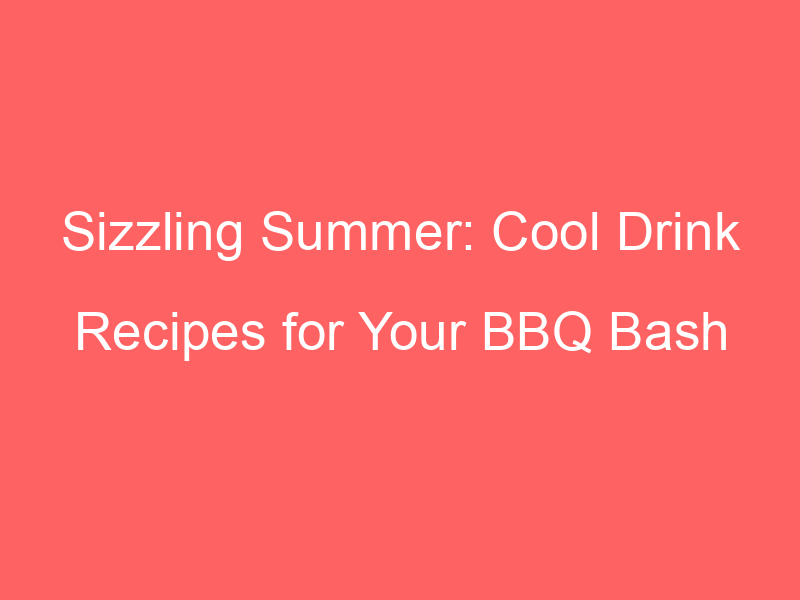Introduction to Grill Temperature Control
Hey there, grill masters! Today we’re going to dive into the exciting world of grill temperature control. It’s a crucial part of grilling that can make or break your barbecue. So, let’s get started!
- Importance of maintaining grill temperature
- Challenges in controlling grill temperature
Controlling the temperature of your grill is like steering a ship. If you don’t have control, you’ll end up off course, and your food might not turn out the way you want. The right temperature ensures your food cooks evenly and brings out the best flavors. It’s like the secret sauce to a perfect barbecue!
According to a Wikipedia article, maintaining a consistent temperature can prevent food from burning or being undercooked. It’s all about finding that sweet spot!
Now, controlling the grill temperature might sound easy, but it can be a bit tricky. Factors like the type of grill, the weather, and even the type of food you’re cooking can affect the temperature. It’s like a game of balance, and sometimes, it can feel like a juggling act.
For example, on a windy day, your grill might lose heat faster, making it harder to maintain the right temperature. Or if you’re cooking a big, juicy steak, it might take longer to cook than a thin, delicate fish fillet. But don’t worry, with a little practice and patience, you’ll become a grill temperature control pro in no time!
So, that’s a quick introduction to grill temperature control. Stick around as we explore more about understanding grill temperature, how to control it, and some advanced techniques. Happy grilling!
Understanding Grill Temperature
Grilling is a fun and tasty way to cook, but understanding the temperature can be a bit tricky. Let’s dive into the basics of BBQ grill temperature and how it affects your food.
BBQ Grill Temperature Basics
There are a few key things you need to know about BBQ grill temperature. Let’s take a look at them:
- What is the ideal BBQ grill temperature?
- How grill temperature affects the taste and texture of food
The ideal grill temperature depends on what you’re cooking. For steaks, a high temperature of around 450-500°F is best. For chicken, aim for a medium temperature of 375-450°F. And for fish, a low temperature of 325-375°F works well. Remember, these are just guidelines. The perfect temperature might vary depending on your specific grill and the thickness of your food.
The temperature of your grill can greatly impact the taste and texture of your food. High temperatures create a nice sear and flavor on the outside of your food, while keeping the inside juicy and tender. On the other hand, low temperatures are great for slow cooking and can result in a smoky flavor and a softer texture. It’s all about finding the right balance for what you’re cooking!
Understanding grill temperature is essential for becoming a grill master. So, keep these basics in mind the next time you fire up your grill!
Factors Affecting Grill Temperature
When it comes to grilling, temperature control is key. But did you know that there are several factors that can affect your grill’s temperature? Let’s take a closer look at these factors:
- Outdoor temperature and weather conditions
- Type and amount of fuel used
- Grill design and material
Believe it or not, the weather outside can have a big impact on your grill’s temperature. On a hot, sunny day, your grill might heat up faster and stay hot for longer. But on a cold, windy day, it might be harder to maintain a steady temperature. Rain can also cool down your grill and make it harder to control the temperature. So, always keep an eye on the weather when you’re planning a BBQ!
The type and amount of fuel you use can also affect your grill’s temperature. For example, charcoal grills tend to be hotter than gas grills. And the more fuel you use, the hotter your grill will get. But remember, more heat isn’t always better. It’s all about finding the right balance for the food you’re cooking.
Finally, the design and material of your grill can affect its temperature. Some grills are designed to retain heat better than others. And certain materials, like cast iron, can hold heat longer than others. So, when you’re choosing a grill, think about how its design and material will affect its temperature control.
Understanding these factors can help you better control your grill’s temperature and cook your food just the way you like it. So, the next time you fire up the grill, keep these factors in mind!
How to Control Grill Temperature
Getting the perfect grill temperature can be a bit tricky, but with a few tips and tricks, you’ll be a grill master in no time. One of the best ways to control your grill temperature is by using the vents. Let’s dive into how this works.
Using Vents to Control Grill Temperature
Vents are a crucial part of your grill. They help control the heat and keep your food cooking at just the right temperature. Let’s take a closer look at how they work and how you can use them to your advantage.
- How vents work in maintaining grill heat
- Practical tips for using vents to control grill temperature
- Start with the vents open: When you first light your grill, keep the vents open. This allows the fire to get plenty of oxygen and heat up quickly.
- Adjust as needed: Once your grill is hot, you can start adjusting the vents. If your food is cooking too fast, close the vents a bit to cool the fire down. If it’s cooking too slow, open them up to increase the heat.
- Keep an eye on the temperature: It’s important to regularly check your grill’s temperature. This will help you know when to adjust the vents.
Vents work by controlling the amount of oxygen that gets to your grill’s fire. When the vents are wide open, more oxygen gets in, which makes the fire hotter. On the other hand, when the vents are closed, less oxygen gets in, which cools the fire down. It’s a simple yet effective way to control your grill’s temperature.
Now that you know how vents work, here are some practical tips for using them:
Controlling grill temperature might seem complicated at first, but with practice, you’ll get the hang of it. Remember, it’s all about finding the right balance. Happy grilling!
Using Water Pans for Grill Temperature Maintenance
Did you know that water pans can play a big role in maintaining the temperature of your barbecue grill? Let’s dive into the details!
- Role of water pans in maintaining barbecue temperature
Water pans are like secret superheroes of the grilling world. They help to keep the temperature of your grill steady. How? Well, when the heat from your grill hits the water in the pan, it causes the water to evaporate. This evaporation process absorbs heat, which helps to keep the temperature inside your grill from getting too hot. It’s like having a little air conditioner for your grill!
But that’s not all. Water pans also add moisture to the air inside your grill. This can help to keep your food juicy and delicious. So, not only do water pans help to control the temperature, but they can also improve the taste of your food. It’s a win-win!
- How to use water pans effectively
Now that you know the role of water pans, let’s talk about how to use them effectively. First, you’ll want to fill your water pan with warm water. This helps it to start evaporating faster. Place the pan directly on your grill grates, or if your grill has a specific spot for it, even better!
Keep an eye on your water pan while you’re grilling. If the water starts to run low, you’ll need to add more. Just be careful not to splash any on your food!
Remember, the goal is to maintain a steady temperature. So, if your grill is getting too hot, you might need to add more water. If it’s not hot enough, you might need to let some of the water evaporate off. It’s all about finding that perfect balance!
So, next time you’re firing up the grill, don’t forget your water pan. It’s a simple tool, but it can make a big difference in your grilling experience!
Advanced Techniques for Grill Temperature Control
Hey there, grill masters! Let’s dive into some advanced techniques for controlling your grill temperature. Today, we’re going to talk about using a digital thermometer for BBQ temperature control.
Using a Digital Thermometer for BBQ Temperature Control
Using a digital thermometer can take your grilling game to the next level. Let’s explore why it’s beneficial and how to use it effectively.
- Benefits of using a digital thermometer
- How to use a digital thermometer for accurate grill temperature control
- Turn on your digital thermometer.
- Insert the probe into the thickest part of the meat, away from the bone.
- Wait for the reading to stabilize. This usually takes a few seconds.
- Compare the reading with the recommended temperature for your type of meat.
- If the temperature is too low, continue grilling. If it’s too high, remove the meat from the grill.
First off, a digital thermometer is a grill master’s best friend. It provides accurate temperature readings, helping you avoid undercooked or overcooked food. It’s easy to use and gives you the confidence that your meat is cooked to perfection. Plus, many digital thermometers come with preset temperatures for different types of meat, making your grilling experience even smoother.
Using a digital thermometer is as easy as pie. Here’s a simple step-by-step guide:
Remember, practice makes perfect. The more you use your digital thermometer, the better you’ll get at controlling your grill temperature.
So there you have it, folks! Using a digital thermometer is a great way to take control of your grill temperature. Give it a try and see the difference it makes in your BBQs. Happy grilling!
Using a Heat Diffuser for Grill Heat Maintenance
Hey there, grill enthusiasts! Ever heard of a heat diffuser? If not, you’re in for a treat. This little gadget can make a big difference in your grilling game. Let’s dive in!
- What is a heat diffuser and how does it work?
- Benefits of using a heat diffuser for maintaining grill temperature
- Even Cooking: With a heat diffuser, you can say goodbye to undercooked or overcooked food. It ensures that your food cooks evenly, giving you perfect results every time.
- Better Flavor: By distributing heat evenly, a heat diffuser can help to lock in flavors and juices. This means tastier, juicier food for you and your guests.
- Temperature Control: A heat diffuser can help to maintain a consistent temperature on your grill. This makes it easier to control your cooking and get the results you want.
A heat diffuser is a handy tool that you place between your grill’s heat source and the food you’re cooking. It’s designed to spread the heat evenly across the grill surface. This means no more hot spots or cold zones – just even, consistent heat. It’s like a magic carpet for your grill!
So, how does it work? Well, when the heat from your grill hits the diffuser, it spreads out across the diffuser’s surface. This helps to distribute the heat evenly across your grill. It’s a simple concept, but it can make a huge difference in your cooking.
Now that we know what a heat diffuser is and how it works, let’s talk about why you’d want to use one. Here are a few key benefits:
So, there you have it! A heat diffuser is a simple, effective tool for maintaining grill temperature. Why not give it a try on your next BBQ?
Common Mistakes in Grill Temperature Control
Even the most experienced grill masters can sometimes make mistakes when it comes to controlling the temperature of their grill. Here are some of the most common mistakes that people make, and tips on how to avoid them.
- Not preheating the grill
- Opening the grill lid too often
- Not using a thermometer
Just like you preheat your oven before you start baking, it’s important to preheat your grill before you start grilling. Preheating your grill helps to kill any bacteria that might be present and also helps to create those beautiful grill marks that we all love. If you don’t preheat your grill, your food might not cook evenly.
It’s tempting to keep checking on your food by opening the grill lid, but this can actually cause the temperature inside the grill to drop. Each time you open the lid, you’re letting out heat and smoke, which can affect the flavor and cooking time of your food. Try to resist the urge to open the lid too often, and trust that your food is cooking just fine without constant supervision.
One of the best ways to ensure that your food is cooked to the perfect temperature is to use a grill thermometer. A thermometer can help you monitor the internal temperature of your food, so you can avoid undercooking or overcooking. If you’re not using a thermometer, you’re basically guessing when your food is done, which can lead to disappointing results.
Remember, practice makes perfect. The more you grill, the better you’ll get at controlling the temperature. So don’t be discouraged if you make a few mistakes along the way. Happy grilling!
Conclusion: Mastering Grill Temperature Maintenance
As we wrap up our grill temperature journey, let’s take a moment to reflect on what we’ve learned and why it’s so important. Mastering grill temperature maintenance isn’t just about cooking up a tasty meal – it’s about becoming a true grill master.
- Recap of essential tips for maintaining grill temperature
- Importance of practice in mastering grill temperature control
Remember, understanding your grill and how it operates is the first step to controlling its temperature. Always preheat your grill and use a reliable thermometer to keep track of the heat. Don’t forget to adjust the grill’s vents and lids to control airflow, and keep in mind that different foods require different temperatures. Lastly, always clean your grill after use to ensure it works efficiently next time.
Like any other skill, mastering grill temperature control takes practice. The more you grill, the better you’ll understand how your grill responds to different settings and conditions. So, don’t be discouraged if you don’t get it right the first time. Keep practicing, keep experimenting, and soon enough, you’ll be grilling like a pro.
In the end, remember that grilling is as much an art as it is a science. So, have fun with it, experiment with different techniques, and most importantly, enjoy the delicious results of your hard work. Happy grilling!






